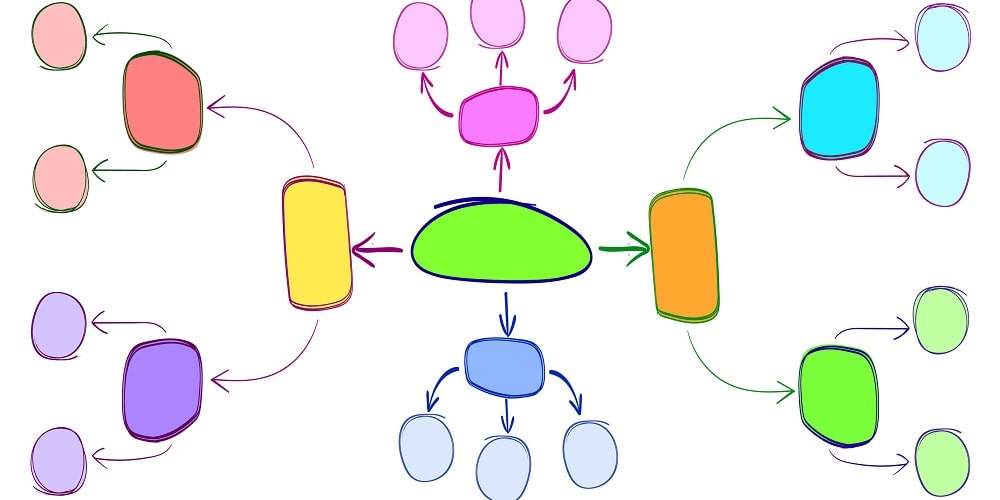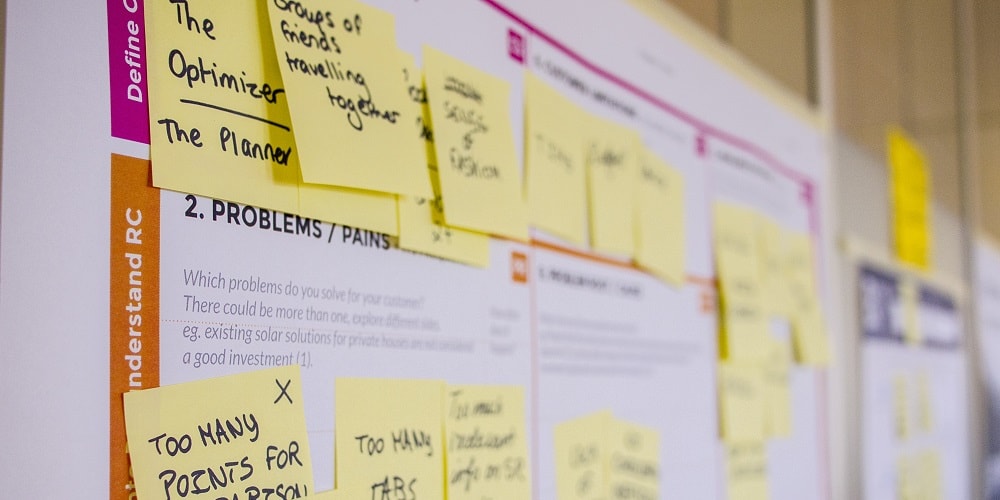Category: Brainstorming

Affinity Diagrams: Your Ultimate Tool for Data Organization
Updated:Sometimes there are too many ideas coming at you at once. When this is the case, instead of succumbing to the chaos, grab a stack of Post-it notes and create an affinity diagram.
Read more »
How Root Cause Analysis (and Employee Engagement) Can Save Lives and Prevent Injuries
Updated:A company producing commercial ink products noticed that injury rates during one step in their manufacturing process were rising after the introduction of a new product. A Lean Six Sigma Master Black Belt (MBB) consultant was hired to help the company try to resolve this serious problem. Was there a simple solution, or would it […]
Read more »
SCAMPER: Generating Creative Approaches to Process and Product Enhancement
Updated:SCAMPER is an acronym for a simple approach to creative brainstorming. The technique uses a series of questions that prompt you to come up with creative ideas for improving products and processes.
Read more »
Understanding Brainstorming: A Structured Approach to Idea Generation
Updated:During the Six Sigma Improvement Stage of DMAIC, you will need to develop strategies and ideas for improving your process. There are three steps to coming up with viable improvement solutions. These steps are idea generation, organization, and assessment. Brainstorming can be defined as a structured method of generating unconstrained ideas/ solutions and gaining engagement/involvement […]
Read more »
An Affinity for Scope
Published:Mike was a newly hired Black Belt (BB) at a roofing shingle manufacturing plant who was going through Six Sigma training. Tim, the general manager of the plant where Mike worked, brought Mike into his office and explained that Mike’s Master Black Belt was on the speaker phone. The Master Black Belt, Robert, shared with […]
Read more »
Mind Mapping: A Simpler Way to Capture Information
Published:Reducing wait times is a perennial challenge for the service industry, particularly if you haven’t rooted out all the causes for the delays. The mind mapping visualization tool can help you make sense of large volumes of interconnected data and fast-track implementation of Lean Six Sigma.
Read more »
How to Revive Your Lean Six Sigma Deployment
Published:The Six Sigma world is filled with stories reiterating the importance of leadership focus when implementing Lean Six Sigma. However, the continuous improvement landscape is also littered with examples of Lean Six Sigma programs that were implemented in full force to start with and then were slowly abandoned after they had spread to other departments […]
Read more »
Effective Brainstorming: Building an Opportunity Matrix
Published:Manufacturing facilities often are faced with major challenges when it comes to large-scale process improvement. Improving yields at a large manufacturing plant – one that produces millions of pounds of product annually – might require modifications for every step in its process: production equipment, maintenance strategies, operational procedures, process control strategies and analytical support strategies, […]
Read more »
Get the Bugs Out: VOC Analysis and Scenario Planning
Published:Through scenario planning, organizations can delight their customers by preparing for problems before they happen and testing solutions on employees first.
Read more »
Thinking Two Moves Ahead with Analytical Tools
Published:Considering the performance of the stock market over the past few years combined with current economic conditions, many financial institutions are analyzing their processes for improvements. Unfortunately, the majority of process improvement tools available to Six Sigma practitioners – such as cause-and-effect diagrams, Pareto charts, histograms and scatter plots – have been used for analyzing […]
Read more »
Brainstorming Rules
Published:Effective brainstorming can be accomplished by following simple brainstorming do’s and don’ts with your team. A brainstorming session is a tool for generating as many ideas or solutions as possible to a problem or issue. It is not a tool for determining the best solution to a problem or issue. Before beginning any effective brainstorming […]
Read more »
Medical Transcription Six Sigma Case Study
Published:Today’s industrial black belt typically trains for six months. Seventy-five percent of this training time is spent learning theory, and the balance is spent in practice. Often when the black belt returns to the real world to tackle inefficiencies, he finds that there are no takers for his logic and passion – his Six Sigma entreaties fall on […]
Read more »
How Your Curiosity Can Keep the Wheels of Collaboration Turning
Published:Of all the ‘how to’ questions my clients have posed this year, none have targeted the skill I most frequently recommend that people develop: being curious. I am an evangelist for curiosity because businesses become moribund without it. Roget’s Thesaurus defines the absence of curiosity as boredom, ennui, taking no interest, a minding one’s own […]
Read more »
Building Team Consensus
Published:The Six Sigma quality methodology almost always requires a Black Belt or Green Belt to lead a team in solving a problem. When teams members interact – and no matter how well the Black or Green Belt can facilitate – opinions of the individual team members will inevitably differ and the team may end up deadlocked, compromising […]
Read more »
Creativity and Six Sigma: Try Doing Some River-jumping
Published:Innovation is vital to a company’s growth. Therefore it is sensible to establish a work environment that encourages people to be creative – a prerequisite to innovation. Introducing Six Sigma as a change initiative can help build that creative environment. But creating such a culture from scratch takes time. During the first years of a deployment, […]
Read more »
Follow Brainstorming Basics to Generate New Ideas
Published:Brainstorming is a popular method of group interaction in both educational and business settings. Although it does not appear to provide a measurable advantage in creative output, brainstorming is an enjoyable exercise that is typically well received by participants and that has proven its value many times over. In Six Sigma, brainstorming is usually most […]
Read more »
Six Sigma and Innovation: Natural Partners from the Start
Published:Innovation has broad appeal. Businesses see it as a key to survival, and most individuals enjoy being creative – at work or anywhere. At first it might seem that the discipline called for in the workplace would take all the fun out of being creative. But actually, innovation coupled with Six Sigma discipline and data […]
Read more »
Reveal Assumptions and Find Root Causes with Webbing
Published:Six Sigma practitioners looking to clarify or explore a task, find root causes of a problem or develop their strategic thinking skills may want to consider using webbing, a valuable exploration tool. Similar to the 5 Whys, this tool encourages practitioners to ask a web of questions about a task or process in order to […]
Read more »
Lean and Creative Six Sigma to Solve Real-life Issues
Published:A strong possibility exists that some organizations using Six Sigma are failing to cash in on the true potential of the methodology. This can happen when proper care is not taken to understand what needs to be integrated with the Six Sigma methodology to make it effective, comprehensive and a focused approach to solve real-life […]
Read more »
Teamwork and Creativity Help to Identify Root Causes
Published:In problem-solving methodologies, identifying potential causes is a crucial step between process mapping and data collection and analysis. It involves the best available process knowledge, as well as creativity. Creativity and team management tools, more often employed for solution finding than for root cause finding, can generate deep understanding of the process mechanics and help […]
Read more »